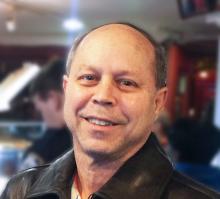At 32 years old, the world was at Larry Unger’s feet. He was vice president at one of Wall Street’s most successful investment management firms, selling mutual funds to more than 1,000 brokers across New York. His clients relied on him for good advice, great jokes, and superlative Yankees tickets. His recent memories included fraternity days at Cornell University and a Harvard law degree. His childhood on the Lower East Side was behind him. He had his own apartment and a beautiful girlfriend.
Then his back started hurting, and he was drenched in sweat at night. His physician suggested it was a basketball injury. Weeks of tests followed, and he changed doctors. Mr. Unger met with an oncologist at Memorial Sloan Kettering Cancer Center who wouldn’t let him go home after the appointment. The next day brought exploratory surgery and an answer to all the questions.
Mr. Unger was diagnosed with stage IIIB Hodgkin lymphoma.
Thirty years later, Mr. Unger credited his survival to the late Subhash Gulati, MD, PhD, then MSKCC’s director of stem cell transplantation. He still recalls Dr. Gulati’s words to him: “Radical situations call for radical solutions.” In 1992, that “radical solution” was an autologous bone-marrow transplant.
“Mr. Unger was a patient pioneer,” said Kenneth Offit, MD, another MSKCC oncologist who also cared for him at that time.
Transplantation for Hodgkin: The early 90s
Hodgkin lymphoma is fairly rare, accounting for just 0.5% of all cancers and 15% of lymphomas. It tends to target young, male adults like Mr. Unger. Today 88% of patients with Hodgkin survive at least 5 years.
When Dr. Gulati offered Mr. Unger his “radical solution” 3 decades ago, the idea of autologous bone marrow transplantation in Hodgkin lymphoma was not new. The first attempt appeared in the literature in the 1950s, but it was still unclear how patients could survive the procedure. It involved destroying the patient’s own immune system prior to the transplant, a huge risk in itself. Worse, the patient was pummeled with chemotherapy and/or radiation to clear out the cancerous bone marrow – a process called “conditioning.”
However, throughout the 1980s, MSKCC had been running clinical trials to perfect the conditioning mix, so by 1992 Dr. Gulati was well-placed to help Mr. Unger.
It is unclear what conditioning Mr. Unger received because his records were not made available. However, around the time that Mr. Unger underwent his transplant, Dr. Gulati and colleagues published the conditioning regimens in use at MSKCC. Patients with refractory or relapsed Hodgkin disease received a conditioning mix of total nodal irradiation (TNI), etoposide (Vepesid) and cyclophosphamide. Patients who had already been through radiotherapy were given carmustine instead of TNI.
In that early publication, Dr. Gulati and the MSKCC team reported 0 “toxic deaths” with the TNI mix, and at the 2-year point 75% of the patients were still alive (n = 28). Patients who had already received radiation treatment did less well, with 55% survival at 2 years, at a cost of 14% toxic deaths (n = 22).


